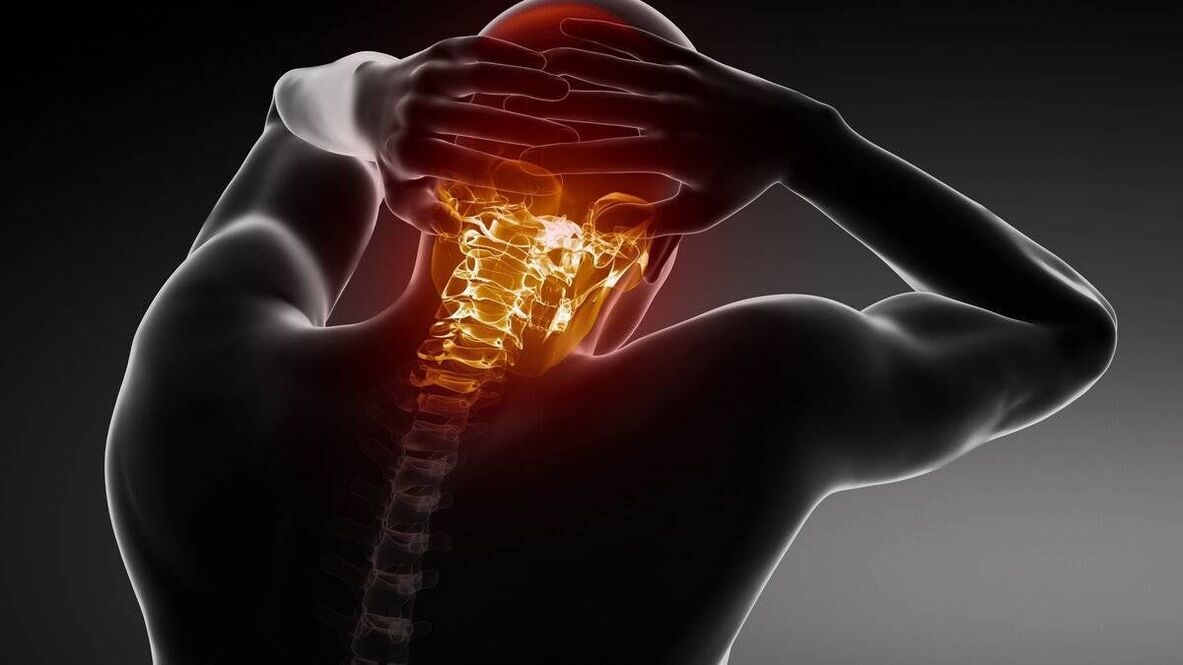
Cervical osteochondrosis occupies a leading place among widespread diseases. The symptoms, treatment and danger of the pathological phenomenon have been studied for a long time. You can carry out the therapy at home, we will analyze it in detail.
Cervical osteochondrosis – stages
There are 4 stages of the disease, let's look at each of them.
Istage
The intervertebral discs shift and their stability is disturbed. It is characterized by muscle tension in the affected area and can also lead to mild pain. The initial stage is mild and the patient often does not take into account the slight discomfort.
IIstage
The intervertebral disc invades the canal, destroying the fibrous ring and reducing the distance between the cervical vertebrae. The main symptom is local pain in specific areas. The pain increases when you tilt or turn your head. The patient becomes exhausted more quickly and feels weak.
IIIstage
The fibrous ring is completely destroyed and a hernia occurs. The spine deforms, the pain increases significantly, the person restricts his movements to relieve the discomfort. The head periodically feels dizzy, lethargy and general tiredness quickly develop.
IVstage
Cervical osteochondrosis in the final stage has its own symptoms, on which the correctness of treatment at home depends. The affected area is unable to move due to severe pain. The discomfort may periodically subside, but this only indicates an even greater deterioration of the situation. The intensity of the pain then doubles.
Cervical osteochondrosis - symptoms
Before treating cervical osteochondrosis, you should examine the symptoms at home.
The main features are:
- hoarse, hoarse voice;
- partial destruction of teeth or worsening of their condition (a person goes to the dentist more often than usual);
- loss of vision;
- Burning between shoulder blades;
- painful sensations in the throat (comparable to the symptoms of a sore throat);
- weakness in arms;
- Pain in the shoulder, back of the head and arms;
- impaired movement coordination (crooked gait);
- dizziness, which can lead to fainting;
- rapid fatigability;
- feeling weak immediately after waking up;
- snoring (not in all cases);
- hearing loss, ringing in the ears;
- headaches that occur daily or frequently;
- Drawing pain in the left side of the chest radiating to the arm;
- limited mobility of the neck, grinding when turning/tilting.
Additional symptoms may occur with cervical osteochondrosis. Accordingly, treatment varies depending on the stage of the disease. In advanced cases, therapy is carried out in medical centers and not at home.
Cervicothoracic osteochondrosis - symptoms
The cause of damage to the chest area is often scoliosis, which manifests itself in adolescence.
The symptoms are as follows:
- Migraine;
- Dizziness;
- Tongue and face become numb;
- asthenia;
- white spots in front of the eyes;
- nausea;
- pain in the area of the heart muscle;
- fingers become numb, tingle, freeze;
- pressure surges;
- pain in the shoulder girdle;
- worsening muscle fiber tone;
- Dental problems.
You should not make the diagnosis yourself, but entrust it to a specialist.
What is the danger of cervical osteochondrosis?
If the disease becomes noticeable at a young age, it causes damage to all parts of the spine:
- cervical radiculopathy;
- cervical hernia;
- cervicocranialgia;
- Protrusion in the neck area (intervertebral protrusion);
- Difficulties with the vertebral arteries, neck osteophytes, paresis, etc. ;
- Cervicobrachialgia.
Cervical osteochondrosis, the symptoms of which we discussed above, poses a certain danger. If treatment at home or in a medical facility began late, complex therapy is required.
Treatment of cervical osteochondrosis
As practice shows, the most popular exercise is the treatment of cervical osteochondrosis. You can also get a massage at home and the doctor may prescribe medication for you to take.
Drug treatment of osteochondrosis
The use of ointments/gels, tablets and targeted patches will help restore the integrity of the cartilage. The pain also decreases, the inflammation disappears and the blood circulation in the inflamed area improves. Medication should be used in conjunction with other home treatment methods.
Among the most effective means it makes sense to highlight the following:
Gel/ointment
- This list contains warming active ingredients.
- Compositions that accelerate the restoration of cartilage tissue are also beneficial.
- To relieve inflammation and relieve pain.
Muscle relaxants
For cervical osteochondrosis, muscle relaxants are taken. However, the symptoms must first be identified; home treatment is prescribed by the doctor. The medication relieves pain and cramps.
Patch
It eliminates swelling, relieves pain and makes the cervical spine more mobile.
Vitamin complex
In order to increase all metabolic processes, the doctor prescribes taking B vitamins.
Chondoprotectors
The aim is to restore cartilage tissue, increase blood circulation and relieve pain. The treatment duration is between 3 and 6 months. A positive result is only possible after the course.
Folk remedies for the treatment of cervical osteochondrosis

Cervical osteochondrosis has its own symptoms; treatment should be prescribed by a specialist. If you seek advice, you can also use effective recipes at home.
Potatoes with honey
Rub medium-sized raw potatoes through a grater. Mix the mixture with an equal amount of honey. Spread over the inflamed area and apply gauze. Wait about 50 minutes. Use the recipe every 3 days.
paraffin
To eliminate painful sensations, melt paraffin or wax in a steam bath. The mixture should cool slightly so that the skin does not burn. Spread over the affected area. It is not recommended to warm the area above the spine; the application is exclusively on the neck. The procedure is carried out every 3 days.
Dough with turpentine
Make a dough from filtered water and rye flour. The flatbread should not be too firm. Rub the inflamed area with turpentine and apply the dough. Cover it with polyethylene and insulate it with a scarf. The procedure lasts no more than a third of an hour. You are allowed to use the recipe three times a week.
Herbal collection
Cervical osteochondrosis can be eliminated with herbs if you have noticed symptoms. Treatment is carried out at home by taking the decoction orally. So mix 1 tbsp. l.
Dandelion leaves, yarrow, thyme, St. John's wort, marigold, chamomile. Add 2 tbsp. l. Herbal mixture in a thermos. Pour in 1 liter. boiling water, let sit for several hours and strain. Drink 60 ml.
3 times a day before meals. The health course lasts 20 days.
Important!
Do not apply irritants to the spinal area. Also, do not experiment with dubious recipes that involve exposure to cold or heat. Due to the close proximity of the cervical spine and the brain, different formulations should be used with caution. This also applies to natural preparations.
Self-massage for cervical osteochondrosis
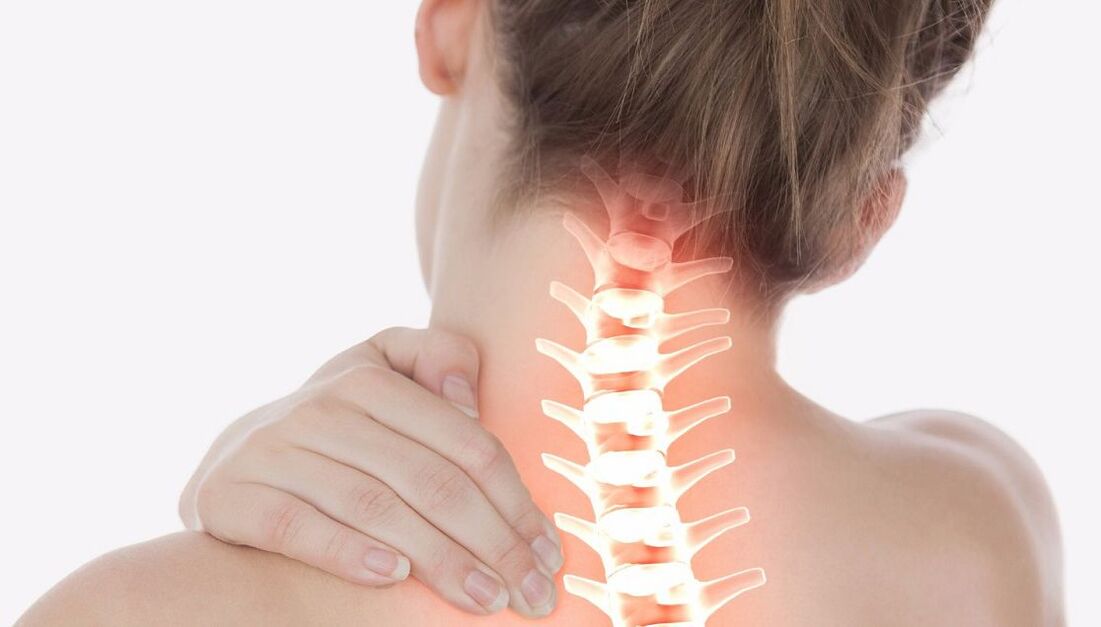
If you do self-massage correctly, you will soon cope with all unpleasant symptoms.
Regulate:
- Finger movements should be from the middle of the spine to the edges;
- Carry out the process using only your fingertips.
- It is forbidden to press hard on the area of inflammation;
- forget about strong pressure and haste, do everything smoothly;
- Treat the back of the head, back muscles and side neck muscles.
Important!
Cervical osteochondrosis should be eliminated as soon as symptoms are detected. Carry out treatment at home on time to avoid complications.
Technology:
- Carry out the procedure exclusively while sitting;
- Cross your legs and place your elbow so that it reaches your neck and spine.
- wrap the fingers of the other hand around your neck from all sides;
- stroke, rub and knead the lateral and posterior muscles;
- end with stroking;
- Duration – 10 minutes, frequency – every day.
Exercises for cervical osteochondrosis
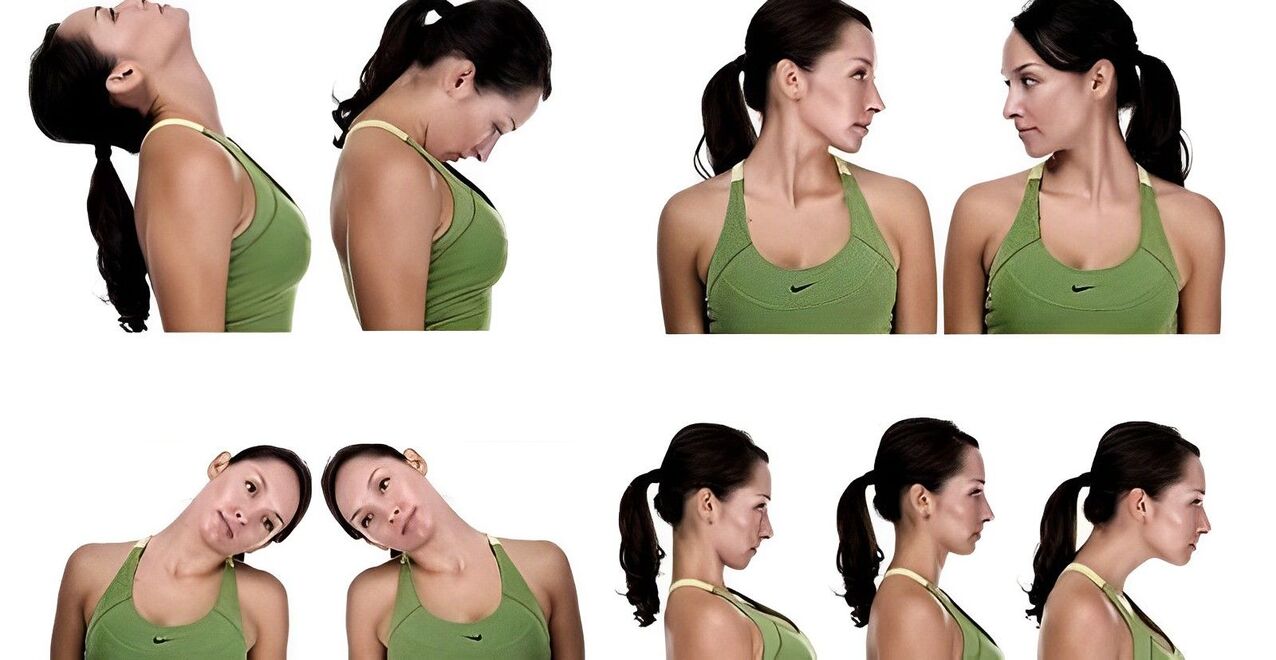
Before doing exercises for cervical osteochondrosis, warm up in the bath or shower. This will help perform the procedure at home more efficiently and increase blood circulation.
Each exercise is performed 10-12 repetitions daily.
number 1
Stand upright and place your arms along your body. Tilt your head forward and hold for 10 seconds. Repeat the process in the opposite direction.
No. 2
Take the position described above. Slowly turn your head to the side and pause. Repeat on the other side.
No. 3
Tilt your head in all directions. Stay there for half a minute at a time.
Number 4
Stand up, place your hands on your waist. Tilt your chin forward and turn your head to the side. The chin should rest on the shoulder. At the same time, rotate your body with your head. Freeze for 50 seconds.
No. 5
Sit upright in a chair and fold your palms on your knees. Straighten your arms and spread them to the sides. At the same moment you have to throw your head back. Go back. Make everything smooth.
No. 6
Take the position as in exercise number 5. Grab your right shoulder with your left hand and turn your head to the right. Keep your elbow at a right angle. Repeat the process in the opposite direction.
No. 7
Sit upright in a chair and raise your arms above your head, slightly bent. Turn your head to the side as much as possible. Freeze in this position for 10-12 seconds. Repeat the process in the opposite direction.
Important!
Once you're done doing the exercises, be sure to stretch your muscles slightly. How to avoid pain the next day.
The result of treating cervical osteochondrosis at home
Cervical osteochondrosis requires treatment after symptoms are identified. With proper therapy at home, you can achieve the following results:
- the pressure on the vertebrae is reduced;
- blood circulation in the problem area is normalized;
- painful symptoms disappear;
- metabolism in tissue increases;
- spasms in the neck area disappear;
- The degeneration of bones and cartilage decreases.
The basis of treatment is gymnastics for cervical osteochondrosis. Doing it systematically at home will give you the best results. If you decide to resort to medication, be sure to discuss the procedure with your doctor.
Cervical osteochondrosis, symptoms, treatment with drugs and folk methods, exercises at home
Thanks to healthy intervertebral discs that act as shock absorbers in the spine, a person's movements are light and relaxed. He doesn't have to think about his movements and calculate them to get the least pain.
Over time, as well as under the influence of some other factors, the intervertebral discs wear out and deform, which leads to a disease such as osteochondrosis. Depending on the location of the disc deformation, the disease is divided into spread zones. The most common is cervical osteochondrosis.
Cervical osteochondrosis, symptoms, treatment at home - this is the topic of this article, the materials of which do not contradict official medicine.
Destructive changes in the intervertebral discs are observed from the age of 20, when the natural fluid supply of tissues and organs begins to decrease. Due to the gradual loss of moisture, the volume of the intervertebral discs decreases and the distance between the vertebrae decreases.
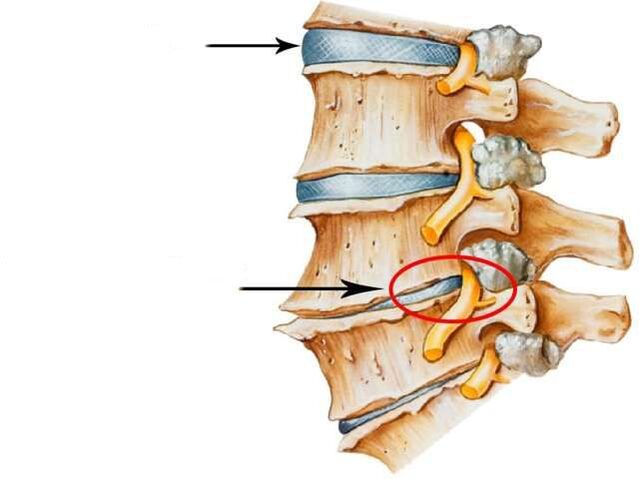
When the reduction in this distance reaches such an extent that the vertebrae come into contact with each other and cause pain, it is called osteochondrosis ("osteo" - bone, "chondro" - connective tissue), that is, a disease of the connective tissue between the vertebrae. The process of development of pathology lasts years and even decades. It can be facilitated (or accelerated) by the following factors:
- Characteristics of a profession that requires fixing the body in a certain position for a long period of time: assembly line worker, vehicle driver, painter;
- sedentary lifestyle, physical inactivity, sedentary work;
- long-term fixation of the body in certain positions: incorrect posture when sitting at the table, incorrect posture when sleeping;
- excessive physical activity to which athletes, dancers, acrobats and loaders are exposed;
- frequent poisoning of the body, which also has a destructive effect on the intervertebral discs. These include frequent colds, bad habits;
- Flat feet;
- Back injuries that lead to disruption of the integrity of the intervertebral discs.
Symptoms
Cervical spine symptoms are usually divided into three groups:
- Painful sensationsmanifests itself as pain in the upper back, neck and back of the head. The pain can either be clearly localized or radiate into the arm. Depending on which vertebrae the intervertebral disc is damaged, pain can radiate (spread) to the left or right arm - both in the forearm area and along the length of the entire arm up to the fingertips. Pain can be constant or occur occasionally under the influence of certain factors, mainly movements.
- Movement disorders. After a long life with osteochondrosis, a person develops motor stereotypes that lead to the development of movement disorders. For example, if pain occurs when turning the head to the left, then the patient will try to turn the head to the left as little as possible, which is a mistake. Over time, it becomes as impossible to turn your neck to the left as to bend your knee in the opposite direction. Additional symptoms appear in the form of numbness in the fingers, hands and the side surface of the forearm.
- Vegetovascular manifestationsOsteochondrosis occurs due to spasms of vessels or even carotid arteries, which are compressed by the vertebrae and cause migraines and dizziness. "Floaters" in the eyes, noise or congestion in the ears. In the central nervous system, asthenia, depression, weakness, drowsiness and chronic fatigue are observed. And if vertebral artery syndrome is pronounced in cervical osteochondrosis, it is accompanied by increased blood pressure and often severe headaches.
If osteochondrosis itself progresses slowly and almost imperceptibly for the patient, its exacerbations (intervertebral hernia, sciatica) cause the patient great physical suffering, limit movement and significantly worsen the quality of life. Due to severe pain during an exacerbation, even a simple visit to a medical facility can become an impossible task.
When calling an ambulance at home, the patient is given an injection of an anesthetic (usually Ketorol or an analgesic if there is no intolerance), given a signal sheet with an inaccurate, vague diagnosis: "vertebral sciatica" and is recommended to take oneSee a neurologist at the clinic. You still have to go to the clinic!
CurrentlyOsteochondrosis of the cervical and thoracic spinecannot be cured like osteochondrosis of other areas of the spine, but preventive measures and folk remedies combined with traditional treatment stop the development of the disease, prolong the periods of remission and relieve symptoms during exacerbations.
The approach to the treatment of osteochondrosis should be comprehensive, combining methods of traditional medicine and folk methods. An examination in a clinic is necessary to accurately determine osteochondrosis, and not another disease. Finally, shoulder pain can occur not only with osteochondrosis, but also with heart disease, which requires other treatment, often emergency treatment.
Medication
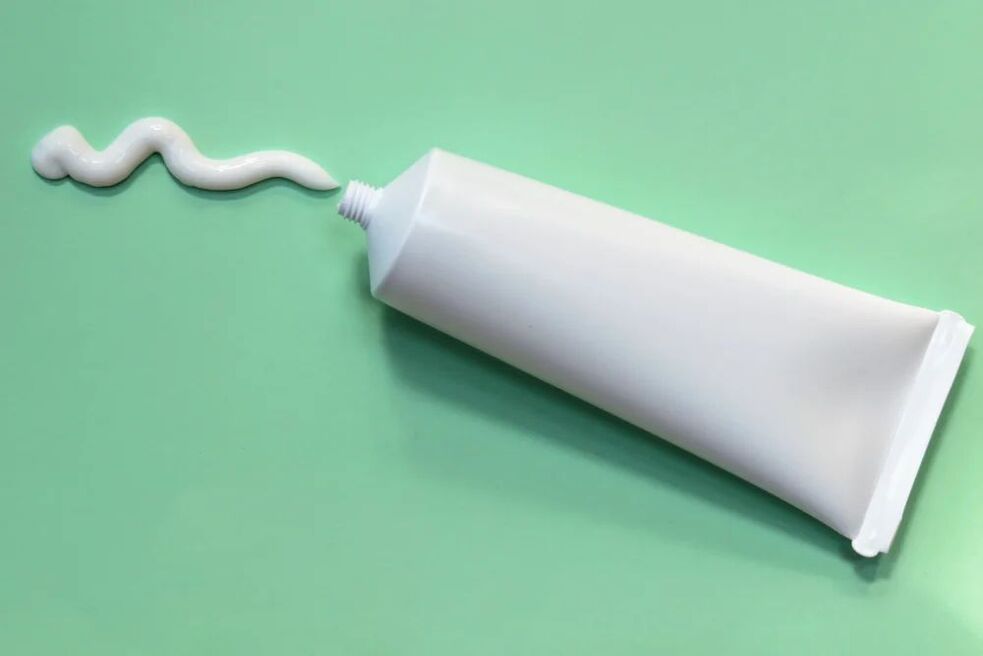
The most effective way to relieve acute back pain is to stop it with anesthetics. However, an MRI scan of the upper spine is required first, which is the most informative diagnostic method today. Depending on the results of the study, the specialist prescribes medication and physiotherapy.
Drug treatment includes prescribing nonsteroidal anti-inflammatory drugs (NSAIDs) in the form of injections, tablets or ointments.
Chondroprotective medications are prescribed to support therapy. Prescribed for severe pain.
Vitamin-mineral complexes are prescribed to relieve symptoms such as numbness, goose bumps under the skin, chills, and to enhance the effect of drugs from the above groups.
physical therapy
As part of the physical procedures, the patient is prescribed therapeutic exercises that can be performed at home. First of all, it is recommended to see her in a medical facility.
This is necessary in order to memorize the exercises and the way they are performed. Not all exercises can be performed with osteochondrosis.
A set of correctly selected exercises strengthens the back and neck muscles and stabilizes the functions of the spine.
The exercises consist of straightening the back: hanging on the horizontal bar, freezing in certain poses. By stretching the back, nerve roots that are trapped in the vertebrae are released, thus relieving pain. Exercises with jerking movements, strength exercises, running and side bending are prohibited.
- We recommend that you read the material at the following link:
- — Bubnovsky – video gymnastics for healing the spine and joints
- Sergei Mikhailovich Bubnovsky is the developer of a unique health-improving gymnastics that has helped many today.
Swimming is another form of physical activity that brings quick and long-term results. Freestyle swimming or breaststroke swimming are the most suitable methods for patients with osteochondrosis of the cervical or thoracic spine. You can master them by purchasing a gym membership. In the warm season you can practice in local reservoirs.
Brain gliosis: causes, symptoms, treatment and prognosis
Yoga, a branch of oriental medicine, offers a rich selection of physical exercises for osteochondrosis."Ayurveda".
If you have acute pain, gymnastics is prohibited! Only after getting up in the morning is it allowed to hang on a horizontal bar or crossbar with your arms spread wide; The strongest pain is felt in the morning, after sleeping, after staying in one position for a long time.
Nutrition for osteochondrosis

There is no specific diet for osteochondrosis, but some foods help improve metabolic processes in the cartilage that forms the lining of the intervertebral disc.
These products include: meat and fish, fruits and vegetables, nuts, herbs, dairy products, eggs. During exacerbations, it is recommended to exclude:
- sweet,
- flour and limit the consumption of grains,
- Salt and spices.
You need to drink at least 2 liters of clean water per day. Water cannot be replaced with coffee, juices, carbonated drinks and alkaline mineral waters. It is very useful to add dandelion syrup to the water at the rate of 1 teaspoon per glass.
The syrup is easy to prepare: Pour water over 350 grams of dandelion flowers and two chopped lemons (just until the liquid is covered) and cook for half an hour. Then strain and pour a kilogram of sugar into the resulting broth, dissolve over low heat while stirring. The amount received is enough for a complete course. Dandelion syrup helps retain moisture in the body's cartilage tissue.
The beneficial effects of cinquefoil on the musculoskeletal system are known as it reduces inflammation.
Sabelnik is sold in herbal pharmacies. Fill a glass bottle 2/3 full with grass, pour alcohol or vodka under the cap. Infuse and then store in a dark place for 2 weeks.
Take 10-15 drops with water in the morning. within one to two months. You can repeat the course twice a year. The same cinquefoil tincture can also be used for compresses on the sore neck area.
There is a known connection between poor condition of the intervertebral discs and excess body weight, which increases the load on the intervertebral discs. Therefore, if you are overweight, it is advisable to choose a low-calorie diet for weight loss.
massage
Massage helps with osteochondrosis of the cervical and thoracic spine, especially if it is caused by physical inactivity and lack of exercise. The patient lies stomach down on the sofa so that his chin hangs over the edge of the sofa.
Another family member kneads his back muscles with circular finger movements. He should feel the muscles curling beneath his fingers.
- Then the masseur places his right palm on the spine, with his left palm he applies light pressure from above and carefully slides along the spine from the base of the skull to the tailbone.
- The final step of the massage is to rub the skin of the back with a special composition.
- To prepare it earlier, Pomors, residents of the Arkhangelsk region, used vegetable oil (cheese-pressed, cold-pressed) and sea salt, each in equal volumes.
- The components are stirred regularly for three days and the mixture is stored at room temperature. On the third day the composition is ready for use. When buying sea salt, it is important to pay attention to the composition: it should not contain any dyes, flavors or other additives.
Rubbing the back with this composition is done daily from three minutes. The duration of the session increases by one minute every day and reaches twenty. After the massage, rinse the mixture as usual with any cleanser.
The course will therefore last two weeks. This improves the condition of the vessels in the back and the tissues adjacent to the spine.
This method will be particularly helpful if this is the caseVertebral artery syndrome with cervical osteochondrosiswith increased blood pressure and migraines.
Prevent relapses of the disease
The prognosis when using therapeutic exercises for osteochondrosis is usually favorable. You just need to remember that you should perform exercises for the cervical spine slowly and carefully, listening to each movement. You need to combine different rotations of the neck, its inclinations and supports.
Therefore, if unpleasant sensations appear, exercises for the neck for osteochondrosis should be temporarily suspended.
Therefore, such a disease should be treated very patiently and responsibly. Thus, together with gymnastics for cervical osteochondrosis, it is possible to eliminate spasms of the neck muscles, relieve pain, activate blood circulation and relieve inflammation.
In addition, the patient receives dosed loads that help strengthen cartilage tissue and improve the activity of cerebral vessels.
This disease is constantly prone to relapses. The slightest injury, nervous tension or lifting heavy objects can trigger a severe attack. Therefore, it is necessary to observe preventive measures at work and at home. It is advisable to avoid prolonged stays in one position, sudden head movements and uncomfortable pillows and mattresses.
























